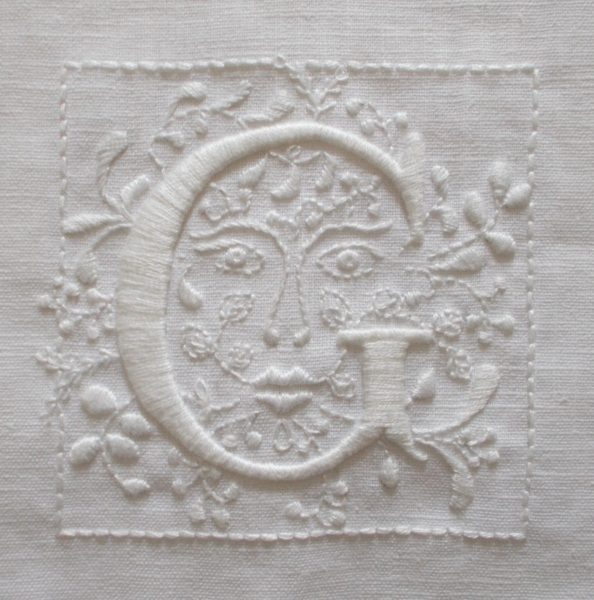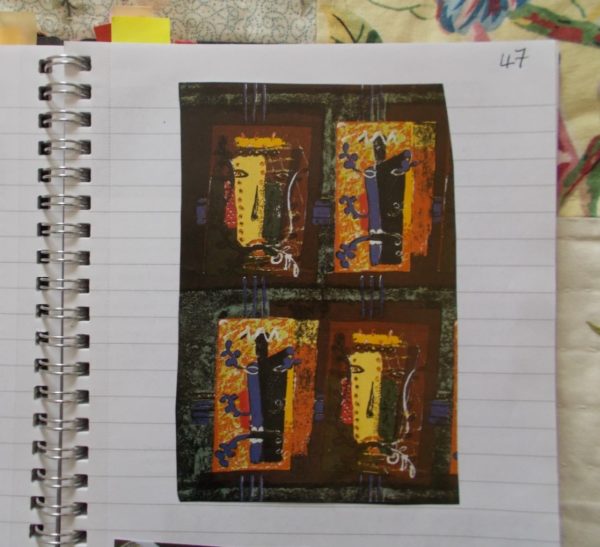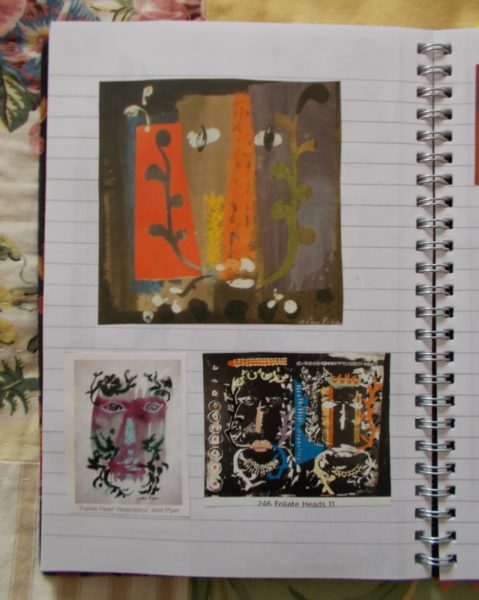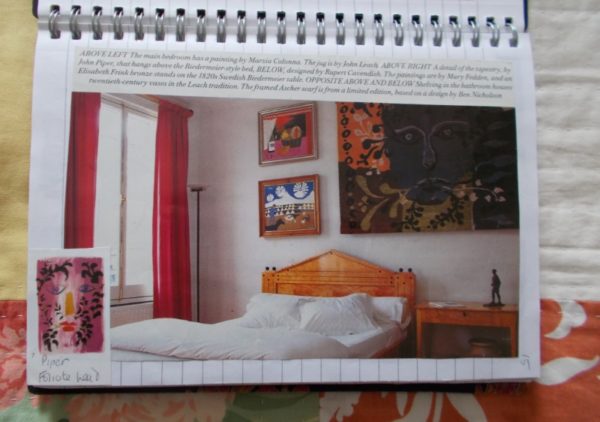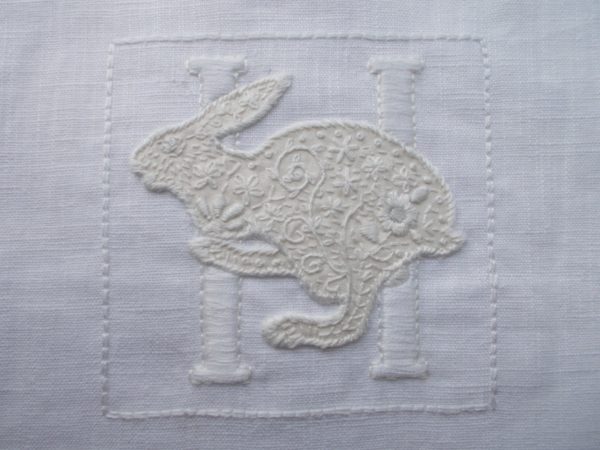
A whitework alphabet: letter H (hand embroidered by Mary Addison)
Oh the bliss of returning to knitting and sewing after a summer spent surrounded by storage boxes, their half forgotten contents and random bits of household furnishings – my welsh grandmother’s brass kettle (which I can neither give away nor know what to do with), an iron curtain rail for a rather large bay window (now cut down by a local blacksmith for our sitting room window) and Chinoiserie lamp bases I’d like to use but don’t have room for (to be kept as, in line with Marie Kondo’s test, they give me joy). Happily, many other things have found an immediate home. A little girl in London now enjoys not one, but two dolls’ houses, (one upstairs and one down, gratis her two maternal aunts) – in a house with so many stairs, a real blessing. Boxes of Sylvanian Families (rhino, leopard, gorilla, fox, tiger and frogs), 20 plus years old but in mint condition and still in their boxes, are equally welcome, though we are rationing their appearance – possibly over several years! And that Vileda mop handle tucked away in a corner is eagerly awaited in London where two mop head replacements bought in error lie temporarily useless. Six white bowls and the odd jug or two will also be absorbed into the London kitchen. Sometimes not throwing things away is so gratifying! Anyway the gist is that the end is in sight and our garage, industrial shelving down both long sides, is very nearly the thing of wonder I have spent sleepless bits of nights fantasising about. Ahhhh. Modified delight.
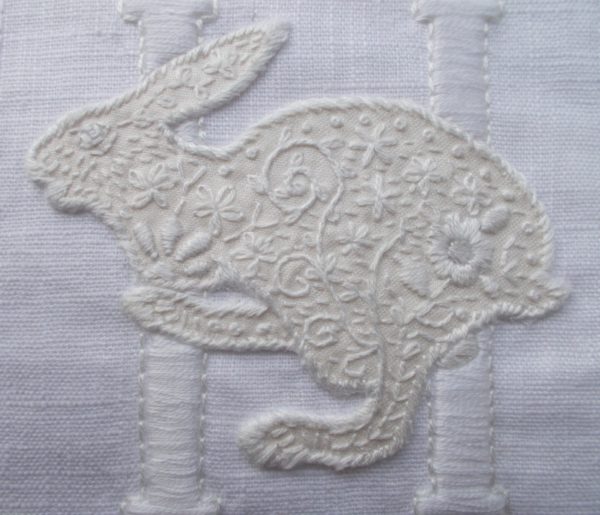
A whitework alphabet: letter H (hand embroidered by Mary Addison)
Back to the whitework alphabet, here is H for Hare – only the hare is racing so fast in front of the H that you have to imagine a large part of the letter! John Lewis-Stempel has written movingly about them in The Running Hare (2016). Even more exciting, he has a new book just out called The Private Life of the Hare (2019). A farmer, trying to farm in the ways of the past, he set about trying to encourage hares on his land. Unlike me he has seen them up close and has formed a vivid impression of their singular appearance.
“…a jack hare, rocking-chair gait peculiar to the species. He stops and glares with golden eyes. Hares have the chiseled head of horses, the legs of lurchers and the eyes of lions.”
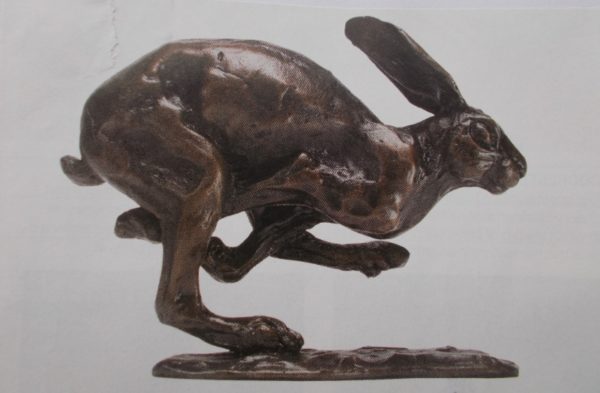
Bronze hare by Sue Maclaurin
He held one once when it had become entangled in sheep netting, needing of all his rugby-playing strength to keep a grip and block out the pain. Yet what does he remember but the soft velvet feel of this most undomesticated of animals. I say undomesticated yet, extraordinarily William Cowper, the C18th poet, kept 3 as pets. Having suffered several mental breakdowns, he found the animals, which came individually to him as abandoned leverets, a solace and comfort, a sort of animal Prozac, their presence in his cottage raising his spirits to such an extent that he was able to write again and even produce his best work (“The Task”). He built little wooden rooms with litter trays beneath for each hare to retire to at night but in the day time they had the run of the house, particularly enjoying dancing on the turkey carpet. I seem to remember reading in one of these books (probably The Running Hare, which daughter No 1 got interested in and took back to London with her) that one of the hares would even sit on his knee, look him in the eye and tell him when he wanted to go out. It’s no coincidence that one of the three was called Puss.
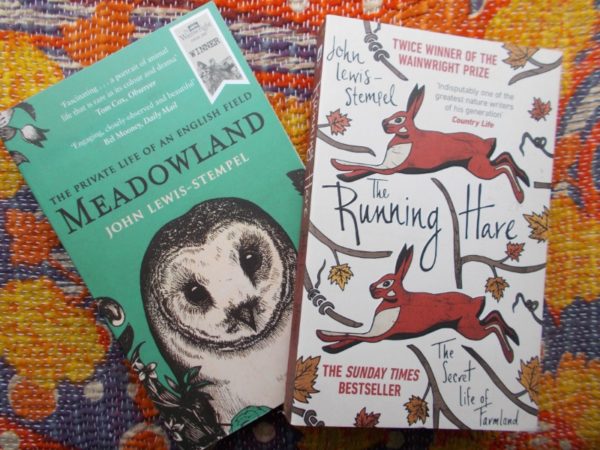
John Lewis-Stempel’s books.
Meadowland & The Running Hare
“the countryside of England, before the depredations of agri-business from the 70s onwards, was a sort of heaven, running with hares. I just want it back.” A hill farmer, with sheep and no crops, he has a desire to see arable land farmed in the old way. In The Running Hare he takes on a short term tenancy of a smallholding to see what he can achieve. He has just one year to put a field to growing wheat and permitting wild flowers and wild animals in the arable, for in the second year he has to return it to grass. Read the book and see how successful he was. Whether farmers en masse can – or would want to – do what he did is to open a Pandora’s box of speculaltion.
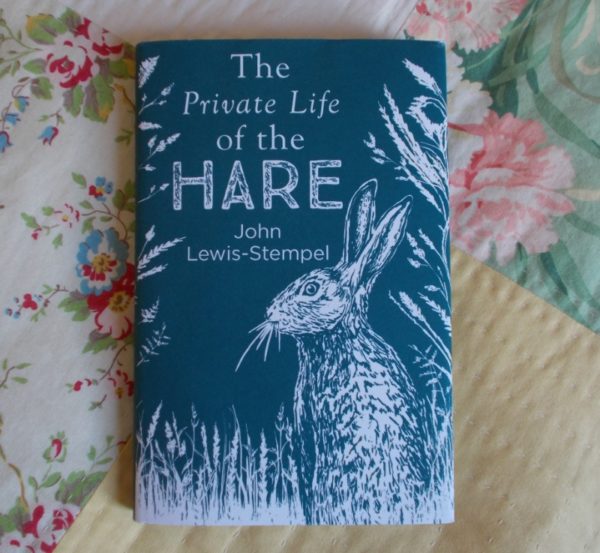
John Lewis-Stempel: The Private Life of the Hare (pub. Oct 2019)
Whatever the farmer in Ipsden was doing he must have been doing something right, for there were hares in the field behind us. I’ve never got close to them but we used to see them from the vicarage window, though only ever in the snow when they’d leap around energetically for a while and then sink back into the snow and then stay like that immobile for hours, small smudges of brown in the sea of white, usually two adults and a younger animal. Their home, called a form, was no more than an indentation in the earth, usually between ploughed furrows. Practically as soon as they’re born leverets have their own form and are visited by their mother for suckling once a day. It seems such a precarious existence, particularly when you think the fields are full of those alpha predators, foxes and the skies above the Chilterns are flooded with Red Kites. Our tiny Cheltenham garden is a delight but though there’s lots of greenery, there’s no wildlife … and hardly any birds. It’s swings and roundabouts. Here we hardly ever use the car and walk everywhere. In the country, you went FOR a walk but almost anything else – going to work, shopping, going to church, meant getting in a car. Now the most basic aspects of life require evaluation and introspection.

